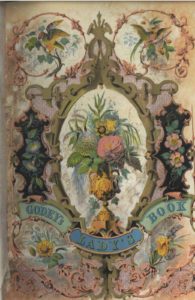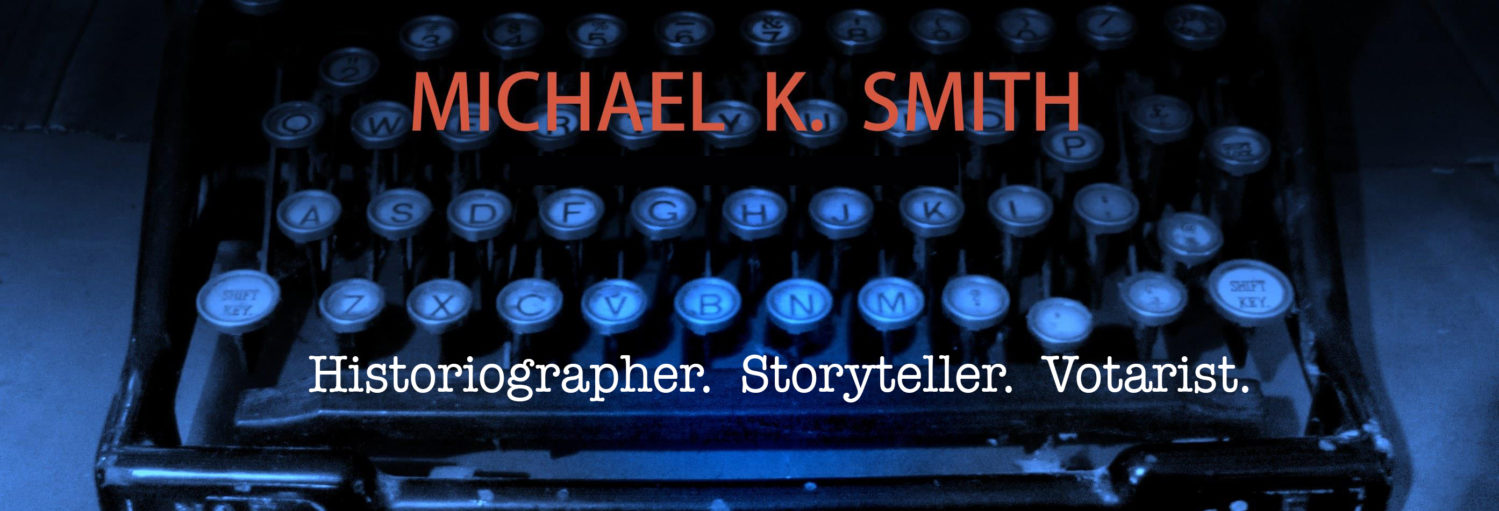 Louis Antoine Godey began publication of Godey’s Lady’s Book in 1830 in Philadelphia. The magazine was aimed at the ever-expanding audience of American women, and was intended to educate and entertain. Over time, the publication would morph into an important literary magazine featuring authors including Harriet Beecher Stowe, Edgar Allan Poe, and several other well-known 19th century writers. It soon became known as the “Queen of the Monthlies” and played an important role in shaping the culture of America.
Louis Antoine Godey began publication of Godey’s Lady’s Book in 1830 in Philadelphia. The magazine was aimed at the ever-expanding audience of American women, and was intended to educate and entertain. Over time, the publication would morph into an important literary magazine featuring authors including Harriet Beecher Stowe, Edgar Allan Poe, and several other well-known 19th century writers. It soon became known as the “Queen of the Monthlies” and played an important role in shaping the culture of America.
Sarah Josepha Hale was the editor of Godey’s Lady Book and a leading voice in establishing Thanksgiving as an annual celebration. Beginning in 1827, she is said to have petitioned 13 presidents to create a formal Thanksgiving holiday. Her final pitch was to President Lincoln, in 1863 in which she positioned the holiday as a way to unite the country in the midst of the Civil War. The rest is, as they say, history. Lincoln signed the proclamation October 3, 1863.
Several years later, the magazine ran a series of 12 articles covering American traditions and lore. Following is excerpted from A Year in the Home: November.
A Year in the Home: November By Augusta Salisbury Prescott
For November, the yule log, the glowing fire upon the hearth, the family gathering-in of those who have long been separated, the home cheer.
November, more than any other month, appeals to families and family ties, because of the Thanksgiving festival. Christmas partakes more of the nature of a religious festival, being a part of our dogma or creed. But it is to Thanksgiving that we must give all the honor and glory of being the day of days, when every one rejoices that we have a land of our own, and a home in which to keep good cheer.
Every one knows that “the” event of Thanksgiving Day is the Thanksgiving dinner. And it is right and reasonable that it should be thus. For a good dinner is the crowning achievement of every home. It strikes a chord to which all hearts are responsive.
But even the Thanksgiving dinner— that ancient and time-honored institution —has undergone a change, and been subjected to a process of evolution which has so changed its nature, that it no more resembles the old-time dinners than a lunch out of a tin pail resembles a Delmonico fête.
The old-time dinner was enormous in quantity and of sickening richness in quality. The viands—some of them smoking hot, and others icy cold—were piled upon the table regardless of proper selection or judicious combination. And, when the board was heaped to overflowing, the guests were invited in to do their uttermost in the way of stowing away the eatables. Each was expected—and did—eat until he could hold no more, and this constituted the most glorious dinner of the year.
Now it is so no longer. To be sure, the Thanksgiving dinner is graced by that national bird, the turkey . But it is not all turkey . His Birdship is brought on after the soup and fish course, and is removed in depleted glory to make room for the à la mode beef that comes next at Thanksgiving feasts of to-day.
To proclaim to the public at large that the turkey course is the most important one, is done by dressing his person in a lovely suit of tissue paper. A broad, green pistache fringe is gathered around his neck, and a lemon, sliced and tied together again with pale green ribbons, is placed where the turkey’ s head would naturally be. The tip of each drumstick is twisted with a green fringe, and yellow and green ruffles are becomingly tied around his body. The edge of the platter on which he lies is garnished with celery tops and sliced lemons and oranges. Under the turkey’ s wings are fastened a couple of olives.
You must have a “millinery party” Thanksgiving night, just before the dancing begins; or, if you intend to bring your festivities to a close early, you can have your millinery party some other cool November evening, when you are seeking ways to pass a frolicsome evening.
The material for your party consists of a number of untrimmed hats—as many as there are gentlemen in the company, the material to trim them with, and separate tables for the different hats.
Each hat is put upon a table with a few feathers, or flowers, and some cheese cloth, or any gay stuff that may be at hand. There is also thread, scissors, needles and pins. The ladies seat themselves at the tables and the gentlemen draw lots. Each man seats himself at the table that has fallen to his share, and goes industriously to work on the hat, which he is told he must trim in twenty minutes. The lady, if she so desires, may aid him with her counsel.
At the end of twenty minutes a whistle is blown, and work is suspended. A committee, previously selected, awards a “King” prize to the man who has been most successful in his attempts at millinery, and a “Booby” prize to the one whose efforts have been nearest to failure. A suitable “King” prize is a velvet or Japanese smoking cap, a “Booby” prize may be a fool’s cap and bells.
All the men now don the hats of their own manufacture, and the evening concludes with a dance.
If you’re interested in reading more about Godey’s Lady’s Book, please have a look at the Accessible Archives, the resource for this piece.

Leave a Reply